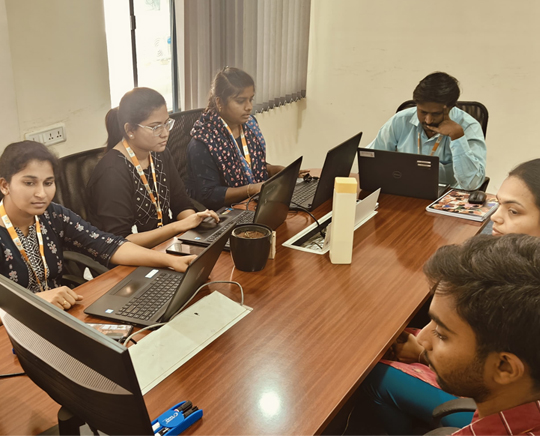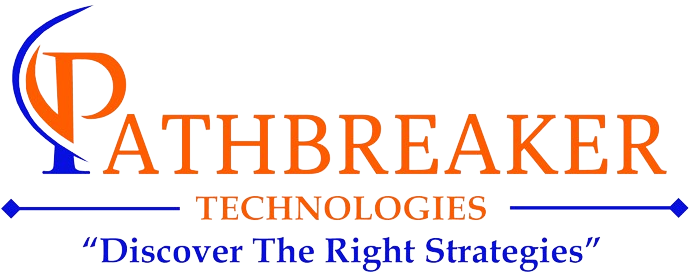
WHY CHOOSE US Pathbreaker Providing the best services.
Comprehensive Service Offerings
Proven Track Record
Global Presence
Flexible Service Delivery Models
Comprehensive Service Offerings:
From legacy system assessment to cloud migration, UI/UX modernization, and more, PathBreaker Technologies offers a wide range of services to meet diverse client needs under one roof.
Proven Track Record:
With a successful track record of helping clients across various industries, PathBreaker Technologies has demonstrated its ability to deliver tangible results and drive business success.
Highly Skilled Talent Pool:
PathBreaker Technologies boasts a highly skilled talent pool of 50+ employees, including developers, engineers, testers, and AI specialists, ensuring that clients have access to the expertise they need to succeed.
Global Presence:
With a strategic footprint in India, APAC, USA, and Canada, PathBreaker Technologies offers clients the advantage of global reach and localized support, facilitating seamless collaboration and project management.
Client-Centric Approach:
PathBreaker Technologies takes a client-centric approach, prioritizing customer satisfaction and striving to exceed expectations at every step of the engagement.
Flexible Service Delivery Models:
Whether clients prefer onshore, offsite, onsite, or hybrid delivery models, PathBreaker Technologies offers flexibility to accommodate diverse preferences and requirements.
Innovation and Technology Leadership:
With a focus on staying at the forefront of technological innovation, PathBreaker Technologies helps clients leverage emerging trends and technologies to gain a competitive edge.
Commitment to Quality and Compliance:
PathBreaker Technologies upholds the highest standards of quality, integrity, and compliance, ensuring that client solutions meet regulatory requirements and industry best practices.
Collaborative Partnership Approach:
PathBreaker Technologies believes in building long-term partnerships based on trust, transparency, and mutual respect, working closely with clients to achieve shared goals and objectives.
Our clients trust us to deliver exceptional value, innovation, and expertise, helping them navigate the complexities of modern IT challenges and achieve their business objectives effectively.
HOW WE OPERATES
How PATHBREAKER assist your business
Bring to the table win-win survival strategies to ensure dotted proactive domination. At the end of the day, on going forward, anew normal that has evolved from the generation on streamlined.

Understand the Requirements .
Requirements definition is the process of gathering, understanding, refining, prioritizing and validating everything a product or project needs to succeed. Effective requirements definitions is essential to ensure your end product meets the needs of users and other stakeholders.
To confirm a effective release, you need a proper requirements document. This document is comprehensive, and it’s about more than the product requirements.
It includes:
- The purpose.
- That purpose broken down into features.
- Release criteria goals.
- Review(s) from the stakeholder(s).

Design an Initial Solution .
Before we initiate to design or architect the application, we first understand he problem. This implies identifying the stakeholders, the business needs, the constraints, the risks, and the success criteria. You can use different techniques to gather and analyze this information, by having workshops, surveys, document reviews. This helps to define the scope and boundaries of the solution, and prioritize the requirements according to their value and viability.
Design ideologies are rules and endorsements that guide your design choices and help you achieve quality traits, such as modularity, cohesion, coupling, testability, and readability. You should follow design principles that are relevant to your solution and your context, and that balance trade-offs and constraints. For example, you might follow the SOLID principles for object-oriented design, or the DRY (Don't Repeat Yourself) principle for avoiding duplication.

Implement and Test the Solution .
Employing a solution involves understanding the problem, setting clear objectives, designing the solution, and allocating resources.
Create a project plan with tasks, timelines, and milestones. Build and test the solution, iterating to fix issues. Train users, manage change, and deploy the solution.

Deliver the Solution .
Implementing a refined solution includes adopting the problem, setting clear objectives, designing the solution, and allocating resources.
Create a project plan with tasks, timelines, and milestones. Build and test the solution, iterating to fix issues. Train end users, manage change, and deploy the solution.

